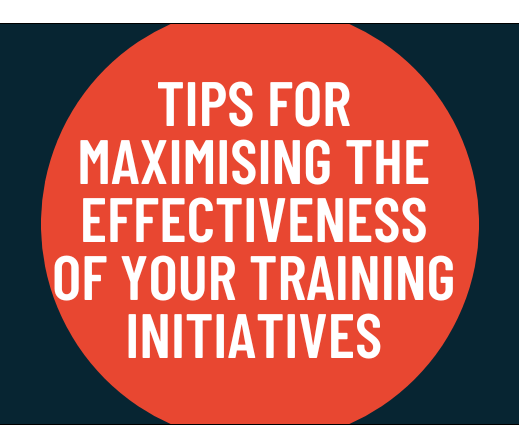 We all know that properly trained staff can hold the key to better performing and more fulfilled teams, but sadly training and development is still often overlooked; or budgets are focused on “firefighting” and solving symptoms rather than addressing the root problems.
We all know that properly trained staff can hold the key to better performing and more fulfilled teams, but sadly training and development is still often overlooked; or budgets are focused on “firefighting” and solving symptoms rather than addressing the root problems.
An effective people development strategy won’t look the same for every organisation, but several actions should be considered when planning your training initiatives.
In today's rapidly evolving business world, fostering a culture of continuous learning cannot be overstated. As organisations adapt to dynamic market trends, technological advancements, and shifting consumer preferences; the need for employees to show continuous professional development and acquire new skills becomes imperative.
A culture that values and promotes ongoing learning not only enhances individual growth but also drives organisational innovation, agility, and competitiveness.
In this blog, we delve into the core principles and best practices for cultivating a culture of continuous learning; empowering both employees and organisations to thrive in an era of constant change and disruption.
The advantages of training
With a thoughtful approach, training can yield a team that is not only more productive but also more fulfilled, comprising individuals who feel empowered within their work environment and confident in their contributions to the broader organisation.
Engaged employees are inclined to offer discretionary effort — that additional time and focus willingly given when they feel a sense of belonging to their team. Research has shown that:
“Disengaged employees have a 15% lower profitability for a company” – Forbes Advisor
“Companies with highly engaged employees are 21% more profitable” - Forbes Advisor
Consider the significant impact this alone could have on your sales performance.
By providing your staff with the tools they need to excel in their roles through skills training, you enhance job satisfaction, resulting in happier employees, reduced turnover, and an overall improved work environment.
So, let’s explore six steps to maximise the effectiveness of your training initiatives:
- Define Your Objectives and Identify Necessary Skills Begin by clearly outlining the goals you aspire to achieve, and the competencies required to attain them. Take an impartial view of the desired trajectory for your team, pinpointing the specific activities and proficiencies necessary to realize these objectives. Assess the current status and future aspirations of your team to uncover any skill gaps that need to be addressed.
- Assess Existing In-House Skills Compile a comprehensive list of the skills essential for advancing your business. Utilise tools such as a skills matrix to objectively evaluate each team member's abilities. This visual aid illuminates strengths and weaknesses within the team, facilitating the identification of areas for improvement and potential training opportunities. Consider leveraging internal expertise for skill transfer where feasible.
- Analyse Training Deficiencies Reflect on areas where training may have fallen short and assess the reasons behind any shortcomings. Since 2020, most training needs, plans and execution have radically changed. Evaluate whether certain skills were undervalued during recruitment or onboarding processes, or if ongoing training efforts have been inadequate. Use these insights to inform future training strategies and recruitment decisions, ensuring a more robust approach to skill development.
- Collaborate on Training Plans Engage with team members in a constructive dialogue to craft personalised training plans. Approach discussions with empathy and openness, avoiding any implication of inadequacy. Solicit input from individuals regarding their training preferences and aspirations, incorporating their perspectives into the development of tailored training strategies. Foster a culture of active participation and mutual respect to encourage ownership of personal development.
- Align Training with Measurable Outcomes Associate training initiatives with specific performance metrics and adapt training plans as progress unfolds. Monitor individual and team performance closely, identifying tangible Key Performance Indicators (KPIs) influenced by training efforts. Address any discrepancies between improved performance and desired outcomes by refining training strategies to better align with overarching objectives.
- Acknowledge and Reward Progress Recognise and celebrate achievements resulting from training endeavours, offering specific feedback and expressing gratitude for individual and collective efforts. Cultivate a positive environment where continuous learning is valued and rewarded, nurturing employee engagement and self-improvement. Consider seeking external training expertise, such as that offered by Chilli, to complement internal efforts and maximise professional growth opportunities.
Give us a call on 0333 305 6516, or email [email protected] for a friendly chat about your training requirements.